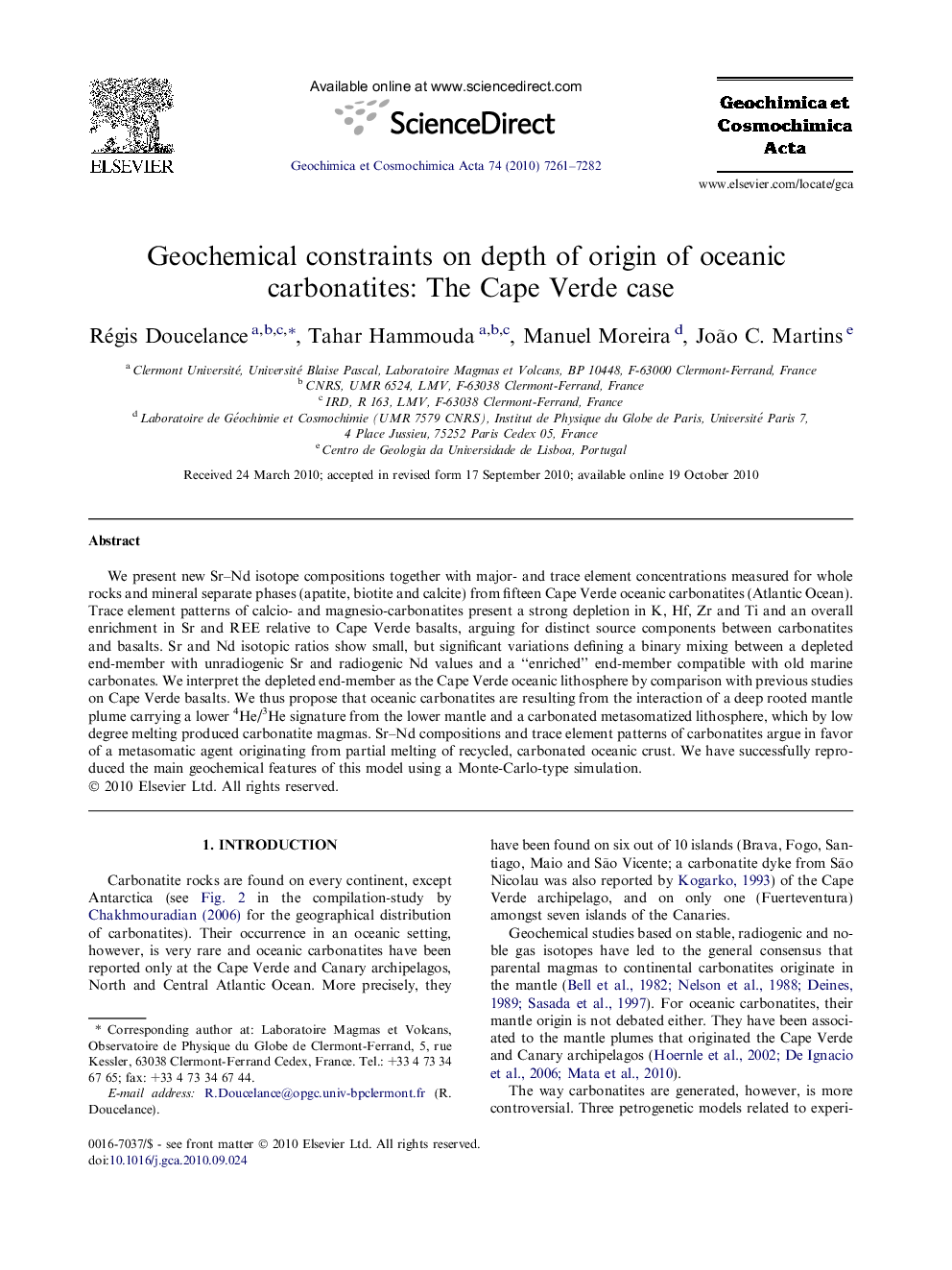| Article ID | Journal | Published Year | Pages | File Type |
|---|---|---|---|---|
| 4703541 | Geochimica et Cosmochimica Acta | 2010 | 22 Pages |
We present new Sr–Nd isotope compositions together with major- and trace element concentrations measured for whole rocks and mineral separate phases (apatite, biotite and calcite) from fifteen Cape Verde oceanic carbonatites (Atlantic Ocean). Trace element patterns of calcio- and magnesio-carbonatites present a strong depletion in K, Hf, Zr and Ti and an overall enrichment in Sr and REE relative to Cape Verde basalts, arguing for distinct source components between carbonatites and basalts. Sr and Nd isotopic ratios show small, but significant variations defining a binary mixing between a depleted end-member with unradiogenic Sr and radiogenic Nd values and a ‘‘enriched’’ end-member compatible with old marine carbonates. We interpret the depleted end-member as the Cape Verde oceanic lithosphere by comparison with previous studies on Cape Verde basalts. We thus propose that oceanic carbonatites are resulting from the interaction of a deep rooted mantle plume carrying a lower 4He/3He signature from the lower mantle and a carbonated metasomatized lithosphere, which by low degree melting produced carbonatite magmas. Sr–Nd compositions and trace element patterns of carbonatites argue in favor of a metasomatic agent originating from partial melting of recycled, carbonated oceanic crust. We have successfully reproduced the main geochemical features of this model using a Monte-Carlo-type simulation.
